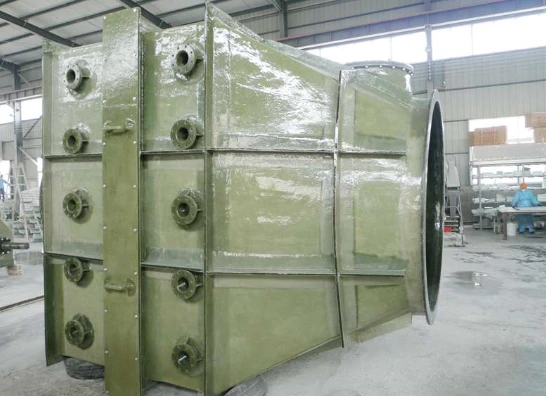
-
 Afrikaans
Afrikaans -
 Albanian
Albanian -
 Amharic
Amharic -
 Arabic
Arabic -
 Armenian
Armenian -
 Azerbaijani
Azerbaijani -
 Basque
Basque -
 Belarusian
Belarusian -
 Bengali
Bengali -
 Bosnian
Bosnian -
 Bulgarian
Bulgarian -
 Catalan
Catalan -
 Cebuano
Cebuano -
 China
China -
 China (Taiwan)
China (Taiwan) -
 Corsican
Corsican -
 Croatian
Croatian -
 Czech
Czech -
 Danish
Danish -
 Dutch
Dutch -
 English
English -
 Esperanto
Esperanto -
 Estonian
Estonian -
 Finnish
Finnish -
 French
French -
 Frisian
Frisian -
 Galician
Galician -
 Georgian
Georgian -
 German
German -
 Greek
Greek -
 Gujarati
Gujarati -
 Haitian Creole
Haitian Creole -
 hausa
hausa -
 hawaiian
hawaiian -
 Hebrew
Hebrew -
 Hindi
Hindi -
 Miao
Miao -
 Hungarian
Hungarian -
 Icelandic
Icelandic -
 igbo
igbo -
 Indonesian
Indonesian -
 irish
irish -
 Italian
Italian -
 Japanese
Japanese -
 Javanese
Javanese -
 Kannada
Kannada -
 kazakh
kazakh -
 Khmer
Khmer -
 Rwandese
Rwandese -
 Korean
Korean -
 Kurdish
Kurdish -
 Kyrgyz
Kyrgyz -
 Lao
Lao -
 Latin
Latin -
 Latvian
Latvian -
 Lithuanian
Lithuanian -
 Luxembourgish
Luxembourgish -
 Macedonian
Macedonian -
 Malgashi
Malgashi -
 Malay
Malay -
 Malayalam
Malayalam -
 Maltese
Maltese -
 Maori
Maori -
 Marathi
Marathi -
 Mongolian
Mongolian -
 Myanmar
Myanmar -
 Nepali
Nepali -
 Norwegian
Norwegian -
 Norwegian
Norwegian -
 Occitan
Occitan -
 Pashto
Pashto -
 Persian
Persian -
 Polish
Polish -
 Portuguese
Portuguese -
 Punjabi
Punjabi -
 Romanian
Romanian -
 Russian
Russian -
 Samoan
Samoan -
 Scottish Gaelic
Scottish Gaelic -
 Serbian
Serbian -
 Sesotho
Sesotho -
 Shona
Shona -
 Sindhi
Sindhi -
 Sinhala
Sinhala -
 Slovak
Slovak -
 Slovenian
Slovenian -
 Somali
Somali -
 Spanish
Spanish -
 Sundanese
Sundanese -
 Swahili
Swahili -
 Swedish
Swedish -
 Tagalog
Tagalog -
 Tajik
Tajik -
 Tamil
Tamil -
 Tatar
Tatar -
 Telugu
Telugu -
 Thai
Thai -
 Turkish
Turkish -
 Turkmen
Turkmen -
 Ukrainian
Ukrainian -
 Urdu
Urdu -
 Uighur
Uighur -
 Uzbek
Uzbek -
 Vietnamese
Vietnamese -
 Welsh
Welsh -
 Bantu
Bantu -
 Yiddish
Yiddish -
 Yoruba
Yoruba -
 Zulu
Zulu
grp fitting
Understanding GRP Fitting A Comprehensive Overview
GRP fitting, short for Glass Reinforced Plastic fitting, has emerged as a vital component in various industries owing to its unique properties and advantages. This innovative material combines glass fibers with resin, resulting in a product that is not only lightweight but also remarkably strong and resistant to corrosion. This article aims to delve into the significance of GRP fitting, its applications, and the reasons behind its growing popularity.
One of the standout features of GRP fitting is its exceptional durability. Unlike traditional materials such as metal or PVC, GRP offers superior resistance to environmental factors such as UV light, moisture, and chemical exposure. This makes GRP fittings particularly suitable for environments where moisture and chemicals are prevalent, such as in sewage systems and chemical processing plants. The longevity of GRP fittings contributes to lower maintenance costs over time, making them a cost-effective solution for various applications.
Understanding GRP Fitting A Comprehensive Overview
Moreover, the lightweight attribute of GRP fitting greatly eases transportation and installation. Reduced weight means that less support is required, and workers can handle them more easily. This attribute also reduces installation time, leading to significant savings in labor costs. These characteristics have led many industries to adopt GRP fittings as a preferred alternative to heavier materials.
grp fitting

Another reason behind the rise of GRP fitting is its environmental impact. The production of GRP fittings generally has a lower carbon footprint compared to traditional materials. Furthermore, they are often manufactured with recyclable components, aligning with the global move towards sustainability and eco-friendly practices. This consideration is crucial for industries aiming to reduce their environmental impact while maintaining productivity.
The market for GRP fittings is expanding rapidly, supported by advancements in technology that have improved the production processes. Today’s manufacturing techniques allow for better quality control and the possibility of creating more complex shapes, thereby broadening the range of applications. As industries become increasingly reliant on GRP fittings, ongoing research into enhanced materials and efficiency is likely to push the boundaries of what these fittings can achieve.
Despite the numerous benefits, it is essential to choose the right supplier for GRP fittings to ensure that they meet industry standards and specific project requirements. Factors to consider include the supplier's reputation, the quality of materials used, and the range of options available. Collaborating with experienced professionals who understand the intricacies of GRP fittings can significantly impact the success of a project.
In conclusion, GRP fitting represents a paradigm shift in material usage across various industries due to its remarkable durability, versatility, and environmental benefits. As industries strive for modern solutions to meet their operational demands, GRP fittings will undoubtedly continue to play an integral role in shaping the future of construction, energy, and beyond. By leveraging the efficiencies offered by GRP fittings, businesses can achieve not only superior performance but also cost savings and a commitment to sustainability.









